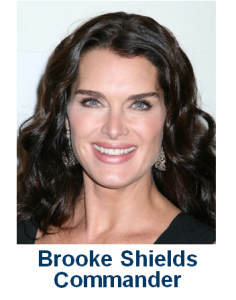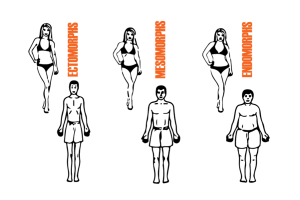There is a persistent and seemingly perpetual notion that extroversion and sociability are one and the same. They aren’t. The true definition of sociability is “liking to be with and talk to other people; involving or allowing friendly and pleasant social relations.” The true definition of extroversion is “the act, state, or habit of being predominantly concerned with and obtaining gratification from what is outside the self; to direct ones interest outward to things outside the self.”
Because of this persistent and wholly erroneous notion, there are tens of thousands of extroverts who believe they are introverts. A recent Huffington Post article, which resulted in the author, Carolyn Gregoire, being interviewed on the Today Show, had obvious extroverts, such as Today Show host Brooke Shields speculating that she must be an introvert. Gregoire, even claimed that outlandishly bold types such as Lady Gaga, Kim Kardashian, Christina Aguilera and 40% of CEOs are introverts. Sorry Carolyn, but you’re way off base.
I am reproducing the article in its entirety here so I can address the many errors and, hopefully, set a bunch of extroverts free. My comments are in a different font color to distinguish them from the article content.
23 Signs You’re Secretly An Introvert
The Huffington Post | By Carolyn Gregoire
Think you can spot an introvert in a crowd? Think again. Although the stereotypical introvert may be the one at the party who’s hanging out alone by the food table fiddling with an iPhone, the “social butterfly” can just as easily have an introverted personality.
Actually, you can spot an introvert in a crowd if you know what you are looking for and are actually looking at the right things. The 23 “signs” True introverts will rarely if ever be a “social butterfly.” Those with a strong extroverted secondary style might move into that arena on occasion, but don’t count on ever seeing one.
“Spotting the introvert can be harder than finding Waldo,” Sophia Dembling, author of “The Introvert’s Way: Living a Quiet Life in a Noisy World,” tells The Huffington Post. “A lot of introverts can pass as extroverts.”
REALITY: There are FAR more extroverts that appear to be introverts than the other way around. Extroverts are bold as children and it is not at all uncommon for parents, schools and churches to condition that out of them quite early. The vast majority of people who feel dissatisfied as adults and are still searching for themselves, are extroverts who have been shoved into an introvert box as a child.
People are frequently unaware that they’re introverts -– especially if they’re not shy — because they may not realize that being an introvert is about more than just cultivating time alone. Instead, it can be more instructive to pay attention to whether they’re losing or gaining energy from being around others, even if the company of friends gives them pleasure.
REALITY: Whether one loses or gains energy from being around other people is more a function of feeling than of introversion or extroversion. Both thinking types (Commander, the extroverted thinking type and Organizer, the introverted thinking type) prefer things to people and are drained by too much social interaction. Both of the feeling types (Entertainer, the extroverted feeling type and Relater, the introverted feeling type) enjoy being around people and are energized by them. The difference in the introverted Relater and the extroverted Entertainer is that Entertainers actively seek people out and don’t mind having quite a few of them around. Relaters wait for people to approach them and prefer to have only a few around at a time.
“Introversion is a basic temperament, so the social aspect — which is what people focus on — is really a small part of being an introvert,” Dr. Marti Olsen Laney, psychotherapist and author of “The Introvert Advantage,” said in a Mensa discussion. “It affects everything in your life.”
REALITY: This is a true statement, but it gets lost in the rest of the article.
Despite the growing conversation around introversion, it remains a frequently misunderstood personality trait. As recently as 2010, the American Psychiatric Association even considered classifying “introverted personality” as a disorder by listing it in the Diagnostic and Statistical Manual (DSM-5), a manual used to diagnose mental illness.
REALITY: The propensity of the American Psychiatric Association to turn any “unusual” behavior into a “disorder” these days so they can collect insurance for dispensing drugs to people who really don’t need them and who, in many cases, are actually harmed by them, just burns me up! That they would even consider labeling introversion as a disorder is outrageous! It doesn’t surprise me though. They labeled a perfectly natural personality type (those who lead with Entertainer) as ADD and then ADHD, and are now drugging children as young as 5 years old when all the vast majority of them need is a little maturity (which, without drugs stunting development, generally comes with age) and learning good coping skills.
But more and more introverts are speaking out about what it really means to be a “quiet” type.
Not sure if you’re an innie or an outie? See if any of these 23 telltale signs of introversion apply to you.
1. You find small talk incredibly cumbersome.
Introverts are notoriously small talk-phobic, as they find idle chatter to be a source of anxiety, or at least annoyance. For many quiet types, chitchat can feel disingenuous.
“Let’s clear one thing up: Introverts do not hate small talk because we dislike people,” Laurie Helgoe writes in Introvert Power: Why Your Inner Life Is Your Hidden Strength. “We hate small talk because we hate the barrier it creates between people.”
REALITY: Commanders, who are most definitely not introverted, hate small talk. As I pointed out in the blog titled “Why Meyers-Briggs Got It Wrong,” there are two ways to extrovert energy: action and interaction. Commanders extrovert their energy through action. To take a specific action and succeed at it requires planning and strategizing, and people can get in the way of that. Commanders recharge by going into action; getting things done; accomplishing goals. When people get in the way of this, Commanders have no problem excluding them. They also have no problem including people when having them around improves the odds of getting the results the Commander is after. Commanders actively avoid parties that have no purpose, for example, but will readily go to a business event that has a purpose, no matter how many people are there, and they easily interact with people they think can help them achieve their goals, which leads us to the fallacy of item 2.
2. You go to parties -– but not to meet people.
If you’re an introvert, you may sometimes enjoy going to parties, but chances are, you’re not going because you’re excited to meet new people. At a party, most introverts would rather spend time with people they already know and feel comfortable around. If you happen to meet a new person that you connect with, great — but meeting people is rarely the goal.
REALITY: Meeting people is rarely the goal for extroverted Commanders and connecting with people is almost always the goal for introverted Relaters. Again, the difference lies in the feeling/thinking functions. The real difference between introverts and extroverts is that introverts are cautious in approaching new people and new situations where extroverts are bold. Extroverted thinking types (Commanders) are bold when it comes to taking action where extroverted feeling types (Entertainers) are bold when it comes to interaction (sociability). Introverted thinking types (Organizers) avoid people and prefer only a few select people in any part of their lives. And they would almost rather take a beating than go to a party. Introverted feeling types (Relaters) will actually go out of their way to meet people, but are cautious in their approach. Once they feel comfortable though, they can be almost as sociable as an Entertainer and are far better hosts and hostesses because they are attentive to the needs of others.
3. You often feel alone in a crowd.
Ever feel like an outsider in the middle of social gatherings and group activities, even with people you know?
“If you tend to find yourself feeling alone in a crowd, you might be an introvert,” says Dembling. “We might let friends or activities pick us, rather than extending our own invitations.”
REALITY: Many Commanders report that they don’t enjoy social situations so don’t make the effort to meet people just to be meeting them. Commanders often feel very much like an outsider in situations where people are being frivolous or lack seriousness or purpose. Their common question: “What’s the point?” To a Commander, everything has to have a point; a logical reason. People getting together and talking about unimportant things just makes no sense to them. And it isn’t about introversion at all. Commanders are quite bold. It’s about what feel like an effective and efficient use of their time.
4. Networking makes you feel like a phony.
Networking (read: small-talk with the end goal of advancing your career) can feel particularly disingenuous for introverts, who crave authenticity in their interactions.
“Networking is stressful if we do it in the ways that are stressful to us,” Dembling says, advising introverts to network in small, intimate groups rather than at large mixers.
REALITY: Feeling like a “phony” has absolutely nothing to do with introversion or extroversion and everything to do with authenticity. While it’s true that introverts are less comfortable networking with strangers, if they are presenting themselves honestly and not trying to put up a false front, they won’t feel phony. Any type will feel phony if they are presenting themselves in ways that are inconsistent with their image of their self.
5. You’ve been called “too intense.”
Do you have a penchant for philosophical conversations and a love of thought-provoking books and movies? If so, you’re a textbook introvert.
“Introverts like to jump into the deep end,” says Dembling.
REALITY: Of all the types, there is no one more intense than a Commander. Organizer, the introverted thinking type, comes close, but because Commanders are both serious and bold, they come across as far more intense than the more cautious Organizer. No one would call a Relater, the introverted feeling type, “intense.” They are actually quite laid back and easy-going. People see Relaters, both male and female, as friendly and approachable.
6. You’re easily distracted.
While extroverts tend to get bored easily when they don’t have enough to do, introverts have the opposite problem — they get easily distracted and overwhelmed in environments with an excess of stimulation.
“Extroverts are commonly found to be more easily bored than introverts on monotonous tasks, probably because they require and thrive on high levels of stimulation,” Clark University researchers wrote in a paper published in the Journal of Personality and Social Psychology. “In contrast, introverts are more easily distracted than extroverts and, hence, prefer relatively unstimulating environments.”
REALITY: This couldn’t be more wrong! Introverts tend to be very focused and purposeful. There is no type more distractible than Entertainers, the feeling extrovert. Those who get labeled ADD or ADHD almost always lead with Entertainer. Introverts do get overwhelmed more readily than extroverts, but not distracted. In fact, Organizers, the introverted thinking types, are the most focused of the four types. They tend to get intensely involved in what they are doing and delight in attending to every detail. There’s a big difference between distractibility and sensitivity to external stimulation. Confusing the two is a mistake.
7. Downtime doesn’t feel unproductive to you.
One of the most fundamental characteristics of introverts is that they need time alone to recharge their batteries. Whereas an extrovert might get bored or antsy spending a day at home alone with tea and a stack of magazines, this sort of down time feels necessary and satisfying to an introvert.
REALITY: This is basically true. What needs to be understood however, is that not accomplishing something is the reason a Commander would get “antsy.” They certainly aren’t sitting at home wishing they were interacting with people. They tend to be quite happy at home all alone as long as they are accomplishing something.
8. Giving a talk in front of 500 people is less stressful than having to mingle with those people afterwards.
Introverts can be excellent leaders and public speakers — and although they’re stereotyped as being the shrinking violet, they don’t necessarily shy away from the spotlight. Performers like Lady Gaga, Christina Aguilera and Emma Watson all identify as introverts, and an estimated 40 percent of CEOs have introverted personalities. Instead, an introvert might struggle more with meeting and greeting large groups of people on an individual basis.
REALITY: Of the people named above, only one of them, Emma Watson, is actually an introvert. Take a look at the pictures of these four women and notice the difference in their energy.




Notice how soft and approachable Emma Watson looks compared to the other three who have a powerful and determined look about them. The determined look is the look of the Commander—lead, follow, or get out of the way. Notice how similar the energy of Lady Gaga, Christina Aguilera and Brooke Shields is. Lady Gaga, whose demeanor is more serious, probably has Organizer as a secondary style where Christina Aguilera and Brooke Shields appear to have Entertainer as their secondary style, which means Christina Aguilera and Brooke Shields are double extroverts since both Commander and Entertainer are extroverted styles.
And, when you see Emma Watson in action, its pretty clear that her secondary style is Entertainer, so even for her, introversion is not a strong preference.
Based on years of research, I can state unequivocally that the vast majority of Actors, CEOs and public speakers lead with either Commander or Entertainer—both extroverted styles. In fact, in the world of acting, finding true introverts is quite a challenge. (Click on the CORE Types tab to see how to recognize the types.)
9. When you get on the subway, you sit at the end of the bench -– not in the middle.
Whenever possible, introverts tend to avoid being surrounded by people on all sides. “We’re likely to sit in places where we can get away when we’re ready to — easily,” says Dembling. “When I go to the theater, I want the aisle seat or the back seat.”
REALITY: Commanders almost always do this if that option exists because they tend to be action oriented rather than people oriented and sitting on the end gives them a greater sense of control and lessens their odds of having to interact with a random stranger, which they see as pointless.
10. You start to shut down after you’ve been active for too long.
Do you start to get tired and unresponsive after you’ve been out and about for too long? It’s likely because you’re trying to conserve energy. Everything introverts do in the outside world causes them to expend energy, after which they’ll need to go back and replenish their stores in a quiet environment, says Dembling. Short of a quiet place to go, many introverts will resort to zoning out.
REALITY: All people “get tired and unresponsive” after they have “been out too long” and everyone needs to conserve energy. The flaw in this point is that it suggests that only introverts shut down when they have been active for “too long.” All types, even the most extroverted, eventually run out of steam and need to recharge their batteries. Introverts get worn down by a lot of activity and interaction faster than extroverts do, but everyone needs to recharge when they have “been active for too long.” You could compare the endurance of an introvert in dealing with a lot of activity and interaction to that of a beginning weight lifter. They can go through the routines, but get tired and need to rest sooner than the strong power builder would. But, even the power builder will get exhausted eventually and need to rest.
11. You’re in a relationship with an extrovert.
It’s true that opposites attract, and introverts frequently gravitate towards outgoing extroverts who encourage them to have fun and not take themselves too seriously.
“Introverts are sometimes drawn to extroverts because they like being able to ride their ‘fun bubble,'” Dembling says.
REALITY: While it’s true that opposites attract, relationships between two extroverts or two introverts is quite common. In the United States about 73% of the population is extroverted so, if extroverts didn’t date or marry one another, more than half the population would never be in a relationship. The fact is, most extroverted women actively seek extroverted men because extroverted men fit the male stereotype which women have been told is how men should be. Commander women who are comfortable with their power often marry introverted Relater males because Relater males are supportive of their mates and don’t try to control them.
12. You’d rather be an expert at one thing than try to do everything.
The dominant brain pathways introverts use is one that allows you to focus and think about things for a while, so they’re geared toward intense study and developing expertise, according to Olsen Laney.
REALITY: Hmmm… let’s see… Introverts are easily distracted (claim #6) but they would rather be an expert at one thing and the “dominant pathways introverts use is one that allows <them> to focus and think.” Does anyone else see a problem here? The fact is, introverts are absolutely not easily distracted! Besides the introversion preference, they also prefer the sensing function, which gives them great powers of observation and focus. Moreover, a preference for doing one thing well rather than trying to do many things is a function of emotional intelligence, not of introversion or extroversion. While sticking to just one thing is generally a stretch for Entertainers, Commanders are notorious for preferring to excel at one thing.
13. You actively avoid any shows that might involve audience participation.
Because really, is anything more terrifying?
REALITY: Again, this can apply to any of the types because it is a fear response, not a function of introversion. Introverts are more sensitive to external stimuli so are more likely to avoid high stimulus situation such as audience participation, but I know plenty of extroverts that avoid such things, especially Commanders because they don’t like trivial things and they don’t like looking like a fool. Of the four types, only Entertainers are comfortable with this type of thing.
14. You screen all your calls — even from friends.
You may not pick up your phone even from people you like, but you’ll call them back as soon as you’re mentally prepared and have gathered the energy for the conversation.
“To me, a ringing phone is like having somebody jump out of a closet and go ‘BOO!,'” says Dembling. “I do like having a long, nice phone call with a friend — as long as it’s not jumping out of the sky at me.”
REALITY: I am a double extrovert (Commander/Entertainer) and I do this. So do most of the other people I know who lead with Commander. It’s more time and energy efficient.
15. You notice details that others don’t.
The upside of being overwhelmed by too much stimuli is that introverts often have a keen eye for detail, noticing things that may escape others around them. Research has found that introverts exhibit increased brain activity when processing visual information, as compared to extroverts.
REALITY: Introverts do notice details far better than extroverts, but not because they are “being overwhelmed by too much stimuli.” When Introverts feel overwhelmed, they shut down. And when any of us shut down, we don’t get more proficient at anything. The reason introverts notice details is because they prefer the sensing function which is the function we all use when we are paying attention in the moment, or being vigilant.
16. You have a constantly running inner monologue.
“Extroverts don’t have the same internal talking as we do,” says Olsen Laney. “Most introverts need to think first and talk later.”
REALITY: No one has a more constantly running inner dialogue than Entertainers. They tend to be very quick minded and are always thinking about the next new thing they will try or the next thing they will say in a conversation. They spend so much time on internal dialogue that they are often not very good listeners. This is not the case for introverts. Both types of introvert are very good listeners and you can’t listen with a constant stream of “internal talking” going on. Introverts DO process information internally before they speak, but internal processing is not the same as internal conversation.
17. You have low blood pressure.
A 2006 Japanese study found that introverts tend to have lower blood pressure than their extroverted counterparts.
No comment here in that I have not researched this, except to say that, as a double extrovert, I have had low blood pressure all my life. Blood pressure tends to increase for a lot of reasons; stress, diet, environment, mindset, etc. To assume that the lower blood pressure found in Japanese people is related to introversion is a pretty big stretch.
18. You’ve been called an “old soul” -– since your 20s.
Introverts observe and take in a lot of information, and they think before they speak, leading them to appear wise to others.
“Introverts tend to think hard and be analytical,” says Dembling. “That can make them seem wise.”
REALITY: Wisdom is a product of life experience and conscious living, not demeanor or “attitude” as Swiss psychologist, Carl Jung, called the preferences for extroversion and introversion. While quietness can be seen as wisdom by some, it can also be seen as dullness and often is by the more extroverted types. “Old soul” wisdom comes from living consciously, which is a function of maturity, not of introversion. I work with conscious leaders and business owners and they are all avid learners, as am I. While introverts do take in a lot of information, it isn’t what we know, it’s what we DO with what we know. Lifelong learners like the ones I work with not only take in a lot of information, they also filter out what has no value and do something meaningful and useful with the rest.
19. You don’t feel “high” from your surroundings
Neurochemically speaking, things like huge parties just aren’t your thing. Extroverts and introverts differ significantly in how their brains process experiences through “reward” centers.
REALITY: Again, Commanders hate parties and anything else that feels trivial or pointless. They get “high” from accomplishing goals.
Researchers demonstrated this phenomenon by giving Ritalin — the ADHD drug that stimulates dopamine production in the brain — to introverted and extroverted college students. They found that extroverts were more likely to associate the feeling of euphoria achieved by the rush of dopamine with the environment they were in. Introverts, by contrast, did not connect the feeling of reward to their surroundings. The study “suggests that introverts have a fundamental difference in how strongly they process rewards from their environment, with the brains of introverts weighing internal cues more strongly than external motivational and reward cues,” explained LiveScience’s Tia Ghose.
REALITY: The reason introverts are introverts is because they are too easily stimulated and must avoid stimulation to maintain a sense of equilibrium. Extroverts are extroverts because they are not easily stimulated and must go seeking stimulation to maintain a sense of equilibrium. Ritalin is a stimulant. Of course introverts are going to react to it differently. And, since extroverts go seeking stimulation in the external world where introverts avoid it, of course they would relate the stimulation with the external world. What does this really prove?
20. You look at the big picture.
When describing the way that introverts think, Jung explained that they’re more interested in ideas and the big picture rather than facts and details. Of course, many introverts excel in detail-oriented tasks — but they often have a mind for more abstract concepts as well.
“Introverts do really enjoy abstract discussion,” says Dembling.
REALITY: What?! This is the complete opposite of the reality and about as far from being accurate as you can get. Commanders and Entertainers, the extroverted, intuitive, types are the big picture people. You can read Carl Jung’s Psychological Types from cover to cover and you will never find what Gregoire claims here. Both of the introverted types prefer facts and details. Organizers like and attend to details around things (numbers, fine art, technology). Relaters like and attend to details around people and aesthetics.
21. You’ve been told to “come out of your shell.”
Many introverted children come to believe that there’s something “wrong” with them if they’re naturally less outspoken and assertive than their peers. Introverted adults often say that as children, they were told to come out of their shells or participate more in class.
REALITY: Introverts tend to do well in school except when it comes to speaking up. Encouraging them to participate more does occur and is actually a great exercise in expanding an introvert’s comfort zone. Extroverts get far more conditioning in school than introverts do. Why? Because they are bold types who speak up more readily than most school teachers like. Where the introverts are asked to participate more, the extroverts are often told to be quiet.
22. You’re a writer.
Introverts are often better at communicating in writing than in person, and many are drawn to the solitary, creative profession of writing. Most introverts — like “Harry Potter” author J.K. Rowling — say that they feel most creatively charged when they have time to be alone with their thoughts.
REALITY: Introverts can be writers, but most are not. And many of our most popular books, especially non-fiction books, are penned by extroverts. This is definitely not a way to determine whether you are an introvert.
23. You alternate between phases of work and solitude, and periods of social activity.
Introverts can move around their introverted “set point” which determines how they need to balance solitude with social activity. But when they move too much — possibly by over-exerting themselves with too much socializing and busyness — they get stressed and need to come back to themselves, according Olsen Laney. This may manifest as going through periods of heightened social activity, and then balancing it out with a period of inwardness and solitude.
“There’s a recovery point that seems to be correlated with how much interaction you’ve done,” says Dembling. “We all have our own private cycles.”
REALITY: This is true for virtually everyone. There isn’t a person on the planet that doesn’t alternate between phases of work and solitude, and only hermits fail to alternate between solitude and social interaction. We all need to do something to survive even if it’s only picking up a fork and putting food into our mouths and we all need time alone, even if it’s only in the bathroom. I’m assuming that by “we all have our own private cycles” Dembling is referring to introverts, but that statement holds true for all people.
___________________________________________________
To Recap:
- There is a big difference between shyness and introversion. Shyness is a fear based response that results in anxiety in social situations. Introversion is a stimulation avoidance response and has nothing to do with fear. There is also a big difference between sociability and extroversion.
- Both introversion and extroversion are means of maintaining emotional equilibrium. Everyone gets to a place of overstimulation at some point and overstimulation results in anxiety for everyone. There isn’t a person on the planet that doesn’t need to withdraw at some point of stimulation to regain a sense of equilibrium.
- It is commonly assumed, as was the case for Carolyn Gregoire, lifestyle editor of the Huffington Post, that extroversion can be determined through the degree of social interaction an individual tolerates. Sociability is just one aspect of Extroversion and not one Commanders prefer to use.
- Based on the above list, Brooke Shields, one of the hosts of the Today Show who is actually a very strong extrovert, believes she is an introvert. Why? Because she leads with the Commander Style and Commanders don’t extrovert their energy through interaction. They are action oriented, not socially inclined.
- According to Gregoire, Lady Gaga, Kim Cardashian, Christina Aguilera and 40% of CEOs are introverts. Every single one of the people named by Gregoire, except Emma Watson lead with Commander.
- Gregoire says some introverts “really thrive in the spotlight.” Says many introverts are “great leaders, great speakers, great actors and actresses.” She qualifies her assumption that these are introverts by saying, “after they have been in the spotlight, they need to go home and rest and recharge and spend some time alone rather than going out and being around a bunch of people all the time.” She says “what is taxing for an introvert is constantly meeting people and being in very stimulating social environments where they have to do a lot of meet and greets and sort of really excessive social interaction.” There is only one type among the four that loves social interaction: Entertainers. Commanders endure it as necessary to accomplish their goals. Organizers (who are introverts) avoid it as much as possible and Relaters (who are also introverts) love it on a small scale and generally prefer to have others approach them rather than approaching others.
- The psychiatrist, Charles Sophy, who appeared on the Today show with Gregoire, stated that you can spot an introvert by determining whether they are a “self-charger.” We are ALL self-chargers. It’s just a matter of how we do that.
The Extroverts
Commanders self-charge by going into action; getting things done; accomplishing goals. People often get in the way of this and, when they do Commanders have no problem excluding them. They also have no problem including people when their being around improves the odds of getting the result the Commander is after.
Entertainers self-charge by interacting with people. They love the experience and excitement of adventure and novelty, and people enhance those experiences.
The Introverts
Organizers self-charge through time alone perfecting some project. Whether it’s technology, science, music, art or anything else, they get pleasure from making sure it’s done right. The concept of jovial play is foreign to Organizers. They approach all of life from a rather serious perspective. Their position is that you can’t play your way to excellence.
Relaters self-charge through connecting with loved ones and creating harmonious environments and relationships. They are energized by seeing the lives of those they care about enhanced in some way and knowing they had a hand in making that happen.






 The reason most of your clients end up as some combination of Commander and/or Entertainer is because those are the two styles which most frequently get conditioned into a compliant box as children. The two cautious types, Relater and Organizer, are easy to manage as children so, with one exception, which I’ll cover later, they are allowed to grow up in accordance with their nature.
The reason most of your clients end up as some combination of Commander and/or Entertainer is because those are the two styles which most frequently get conditioned into a compliant box as children. The two cautious types, Relater and Organizer, are easy to manage as children so, with one exception, which I’ll cover later, they are allowed to grow up in accordance with their nature. 






